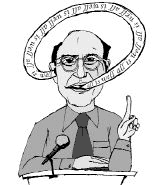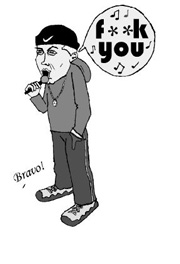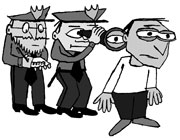IT WAS JUST ANOTHER night on the campaign trail. Seattle City Attorney Mark Sidran (vying for mayor) and City Council member Richard Conlin (up for re-election, and likely to be essentially unopposed) came to listen, and be seen and heard, at the meeting of the East Precinct Crime Prevention Coalition late last month.
I was there as a neighborhood resident, not intending to write about the evening, but as I listened and looked around the room, it occurred to me that this is how the political climate of Seattle is set. Eventually, it’s the basis on which many of our public policy decisions are made: contact by policy-makers with civic groups that draw from a strikingly unrepresentative slice of Seattle.
Not that I want to denigrate the Crime Prevention Coalition’s work—far from it. The sense of frustration, concern, and fear that impels a lot of neighborhood residents to get involved in Weed and Seed, neighborhood watches, and other anticrime, antidrug programs rooted in law enforcement and the justice system is completely valid. These are very real problems; I hate the drug war, but I also live across the street from a community center focusing on children’s programs, and I absolutely don’t want prostitution and open drug dealing on our front steps. At times, that’s what we’ve had, and, regrettably, the only community response mechanism available for most residents is the police.
And so, after work, about 30 concerned citizens filed into a carpeted conference room in the Seattle Vocational Institute. Before Sidran and Conlin spoke, the Coalition spent over an hour running through routine business—reports from law enforcement, residents airing their crime concerns, and the like.
The most notable part of the Coalition’s business was not what was said, but who was there and who wasn’t. Of the 30 people in the room, eight worked in law enforcement; all of them were white. Of the remainder, I counted seven people of color, less than one-third of the civilians. The neighborhood I live in is at least 80 percent African-American; the area as a whole almost certainly has a nonwhite majority, particularly in areas where crime is most endemic.
Yet it was the views of the Coalition members—thoughtful, informed, but very much a product of their experience—that form, and reinforce, the views of Mark Sidran. A young African-American woman presented information from an Urban League program called Youth Congress, but almost everyone else present was middle-aged. The folks likely to, for example, be most bitter about racial profiling weren’t there (see “Death on Union,” p. 12).
This was a Mark Sidran type of audience. There were a few challenges; after an SPD officer gave a roundup of recent police activities and asked for questions, a brave soul asked whether it was appropriate for the officer to be using such militarized terminology in describing civilians. (There was dead silence, followed, eventually, by nervous laughter.)
When Sidran spoke, he began his presentation by observing that he had heard, in the preceding neighborhood reports of drugs, car prowls, and prostitution, a common theme of substance abuse (true enough). He then went on to essentially equate substance abuse with homelessness, then explained that because city spending on homelessness has increased while the problem has only worsened, the programs being funded were ineffective and should be changed. Sidran’s talk was titled “Nuisance Problems in Neighborhoods,” but only one “problem”—the homeless—was mentioned.
Conlin, in his comments, basically agreed with Sidran, as did most of the room. In the short discussion that followed, no Coalition regulars questioned equating a homeless person’s existence with criminal activity. People who, through personal experience, would know to challenge such assumptions were not present. So Sidran heard what he wanted and expected to hear, fielding softball questions and gathering more ammunition for his personable bigotry.
The Coalition is fairly typical. It does good work, but this, in a nutshell, is much of how campaigns are run in Seattle. It’s also how officials are advised, especially in the lulls between election seasons when only the motivated come to such meetings. These are the citizens who get involved in the nuts and bolts of public hearings, crafting legislation, or calling and writing officials. This is how civic Seattle knows what the rest of us are thinking, and this is a significant part of why Seattle’s elected officials tend to be more conservative—in some instances, like the mayor’s race, far more conservative—than most of its voters.
Unless more of the people who currently grouse and mutter but never pick up the phone or go to a hearing decide to get involved, it’s gonna stay that way. And folks like Mark Sidran will continue to believe that they represent the majority, even when they don’t.








